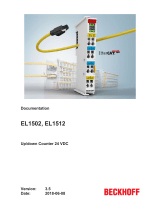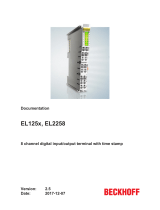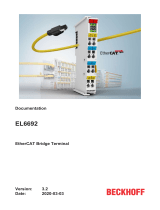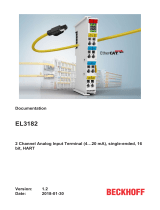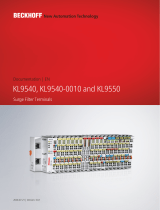
Table of contents
EK18xx4 Version: 2.2
Table of contents
1 Product overview EtherCAT Bus Coupler...............................................................................................3
2 Foreword ....................................................................................................................................................7
2.1 Notes on the documentation..............................................................................................................7
2.2 Safety instructions .............................................................................................................................8
2.3 Documentation issue status ..............................................................................................................9
2.4 Version identification of EtherCAT devices .......................................................................................9
3 Basic principles .......................................................................................................................................14
3.1 EtherCAT basics..............................................................................................................................14
3.2 EtherCAT cabling – wire-bound.......................................................................................................14
3.3 EtherCAT State Machine.................................................................................................................15
3.4 CoE - Interface: notes......................................................................................................................16
3.5 Distributed Clock .............................................................................................................................16
4 Product overview.....................................................................................................................................18
4.1 Overview of EtherCAT couplers EK18xx.........................................................................................18
4.2 EK18xx ............................................................................................................................................20
4.2.1 Introduction ...................................................................................................................... 20
4.2.2 Technical data ................................................................................................................. 21
4.2.3 Optional distributed clocks support.................................................................................. 22
4.2.4 EtherCAT coupler port allocation..................................................................................... 24
5 Mounting and wiring................................................................................................................................27
5.1 Instructions for ESD protection........................................................................................................27
5.2 Installation on mounting rails ...........................................................................................................27
5.3 Connection system ..........................................................................................................................30
5.4 Positioning of passive Terminals .....................................................................................................34
5.5 Power supply, potential groups .......................................................................................................34
5.6 EK18xx - connection........................................................................................................................37
5.6.1 EK1814 - connection ....................................................................................................... 37
5.6.2 EK1818 - connection ....................................................................................................... 38
5.6.3 EK1828 - connection ....................................................................................................... 39
5.6.4 EK1828-0010 - connection .............................................................................................. 40
6 Parameterization and commissioning...................................................................................................41
6.1 Configuration overview ....................................................................................................................41
6.2 Overview of process data ................................................................................................................41
6.2.1 EK1814 ............................................................................................................................ 41
6.2.2 EK1818 ............................................................................................................................ 44
6.2.3 EK1828 ............................................................................................................................ 47
6.2.4 EK1828-0010................................................................................................................... 51
7 Error handling and diagnostics..............................................................................................................54
7.1 Diagnostic LEDs ..............................................................................................................................54
8 Appendix ..................................................................................................................................................56
8.1 UL notice .........................................................................................................................................56
8.2 Firmware compatibility.....................................................................................................................57




















